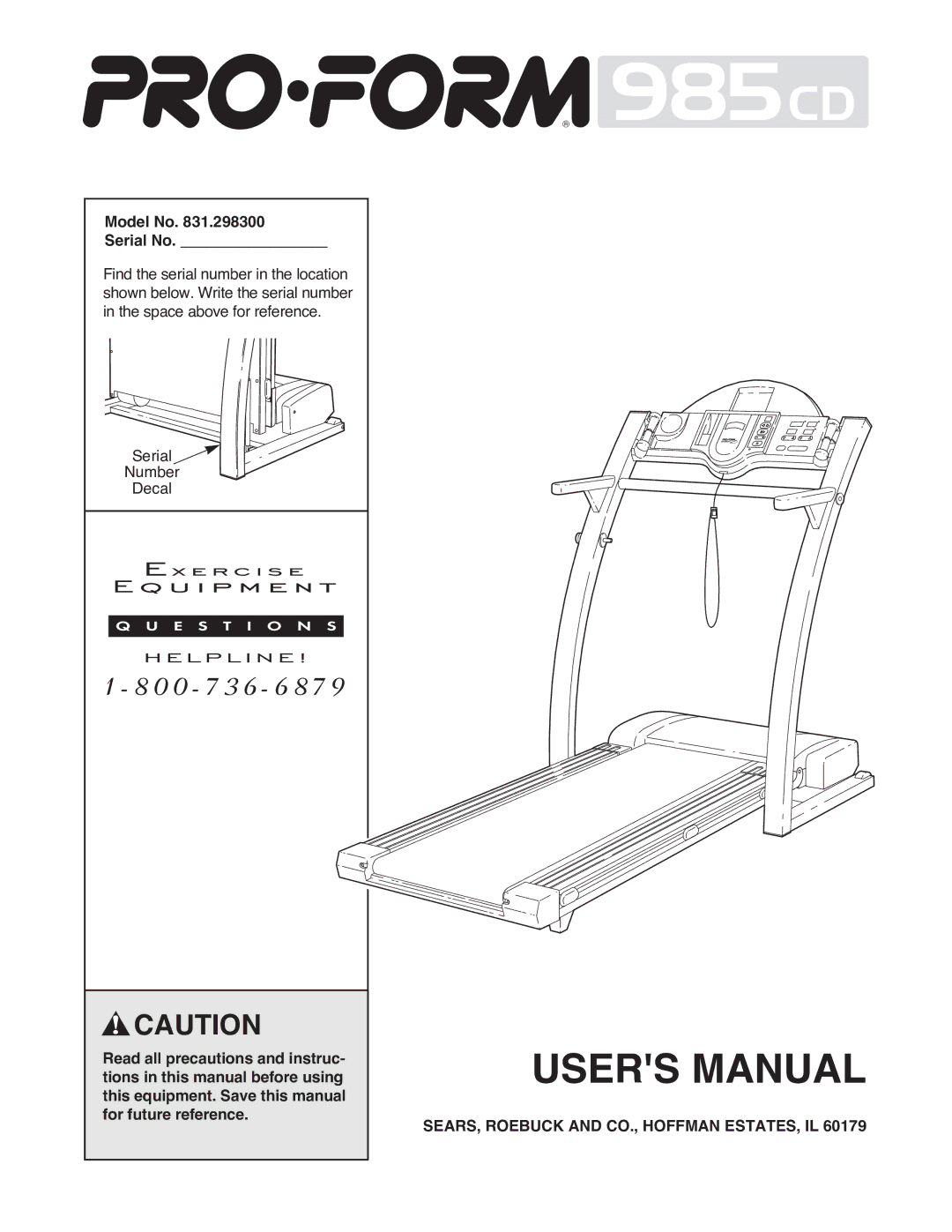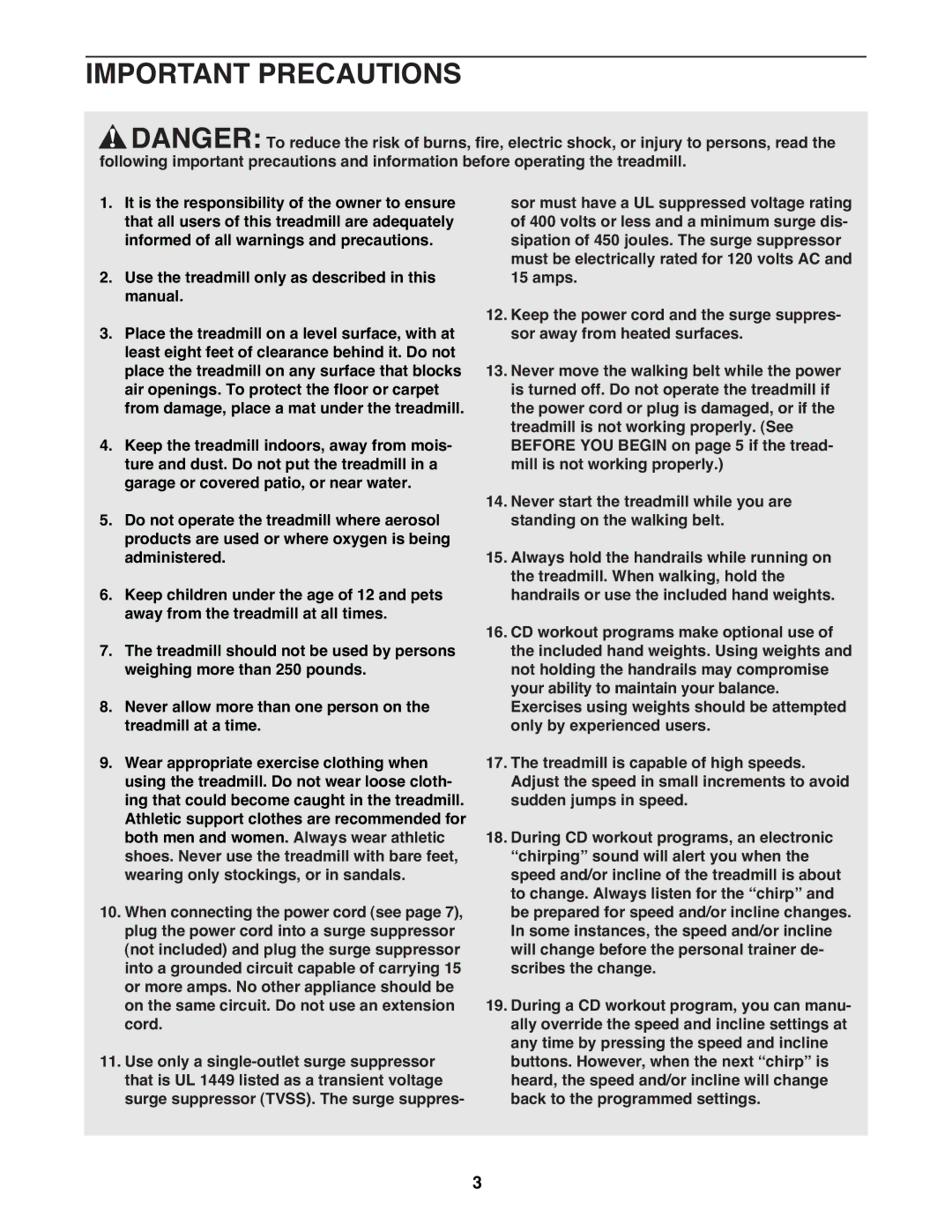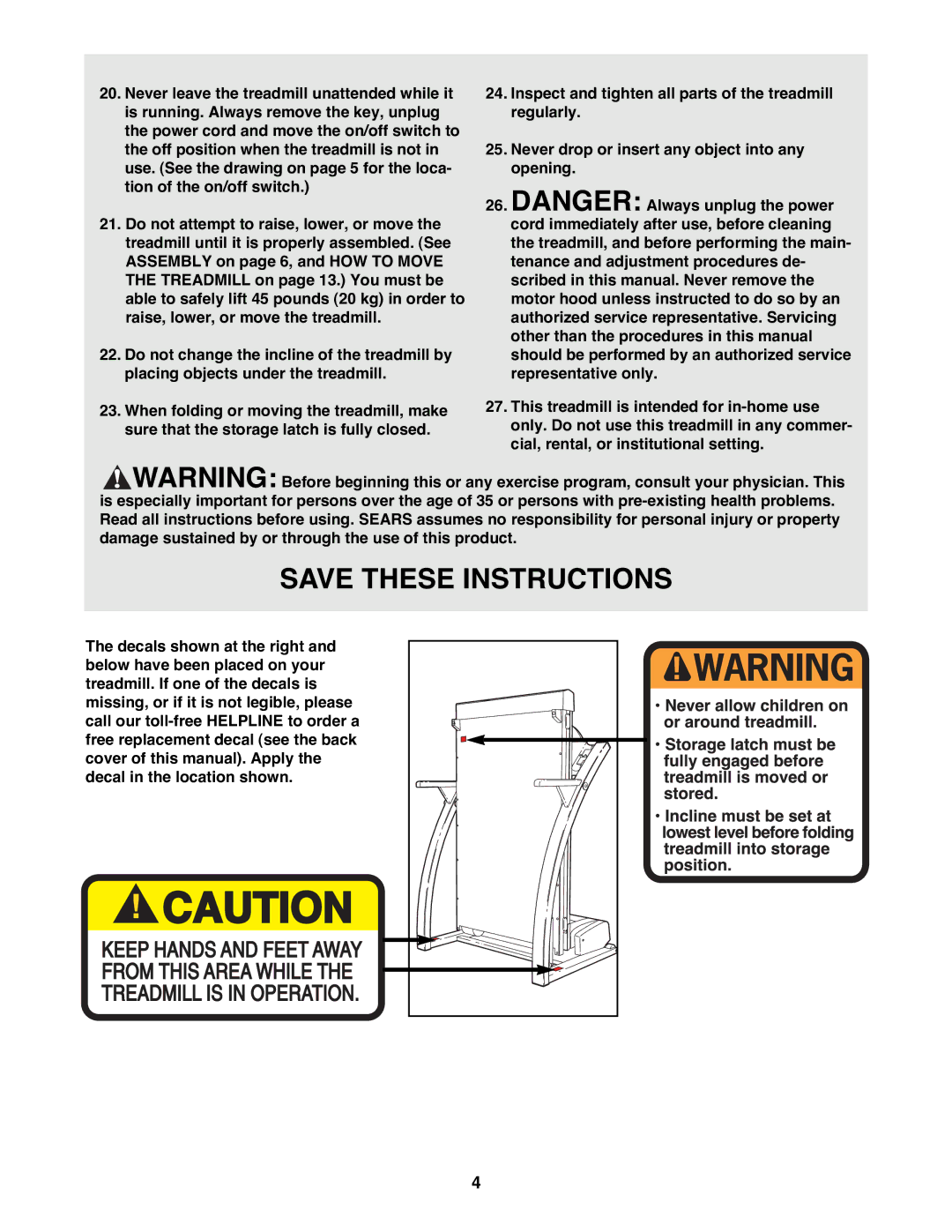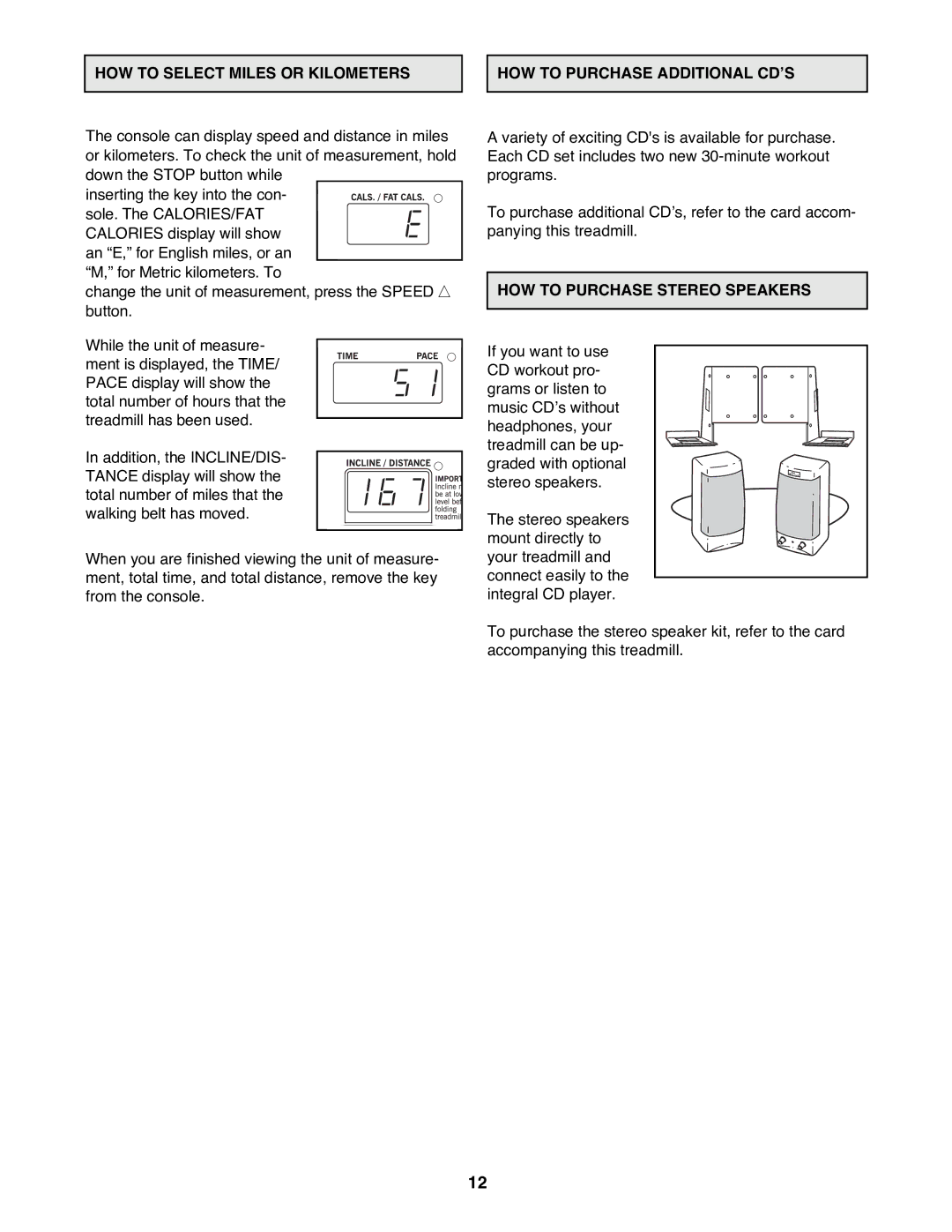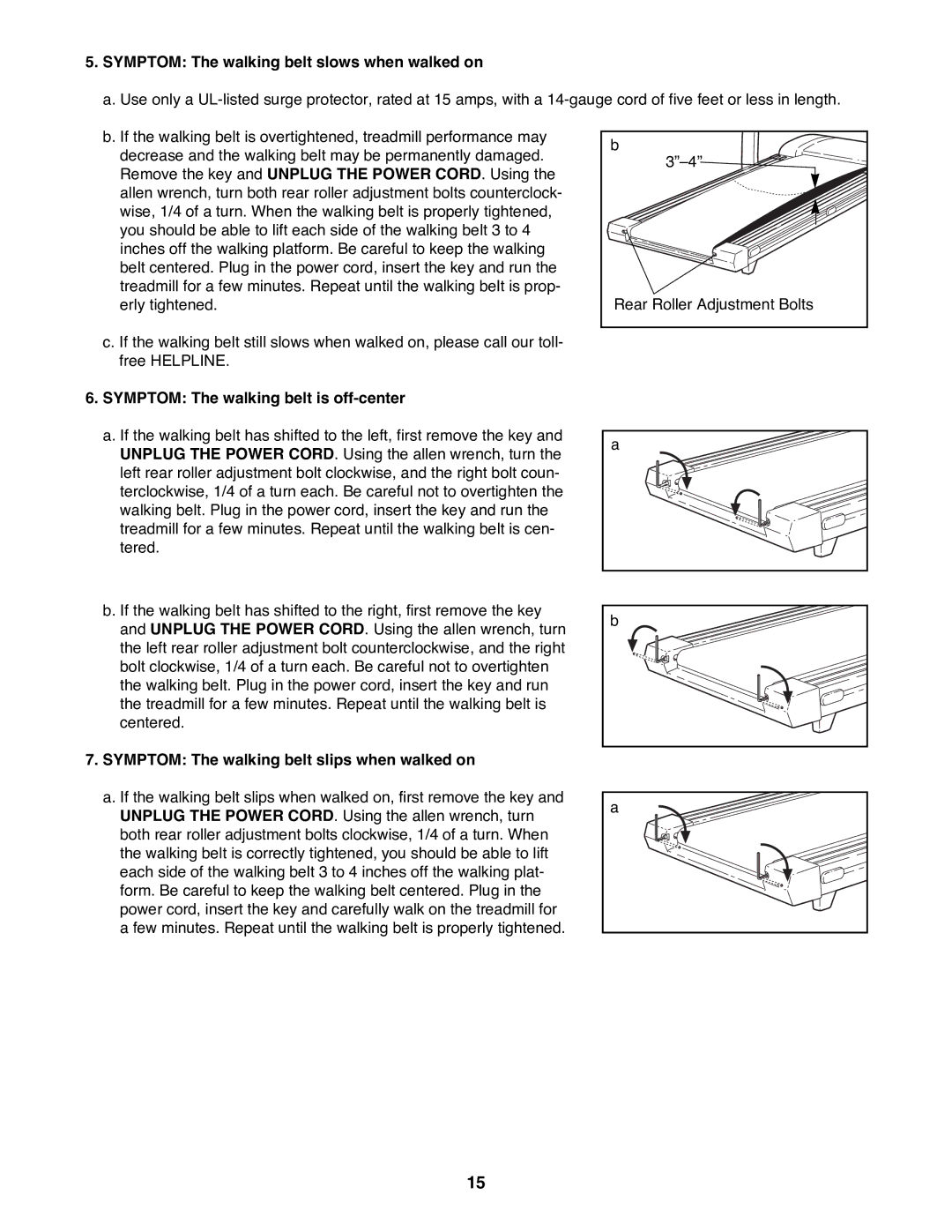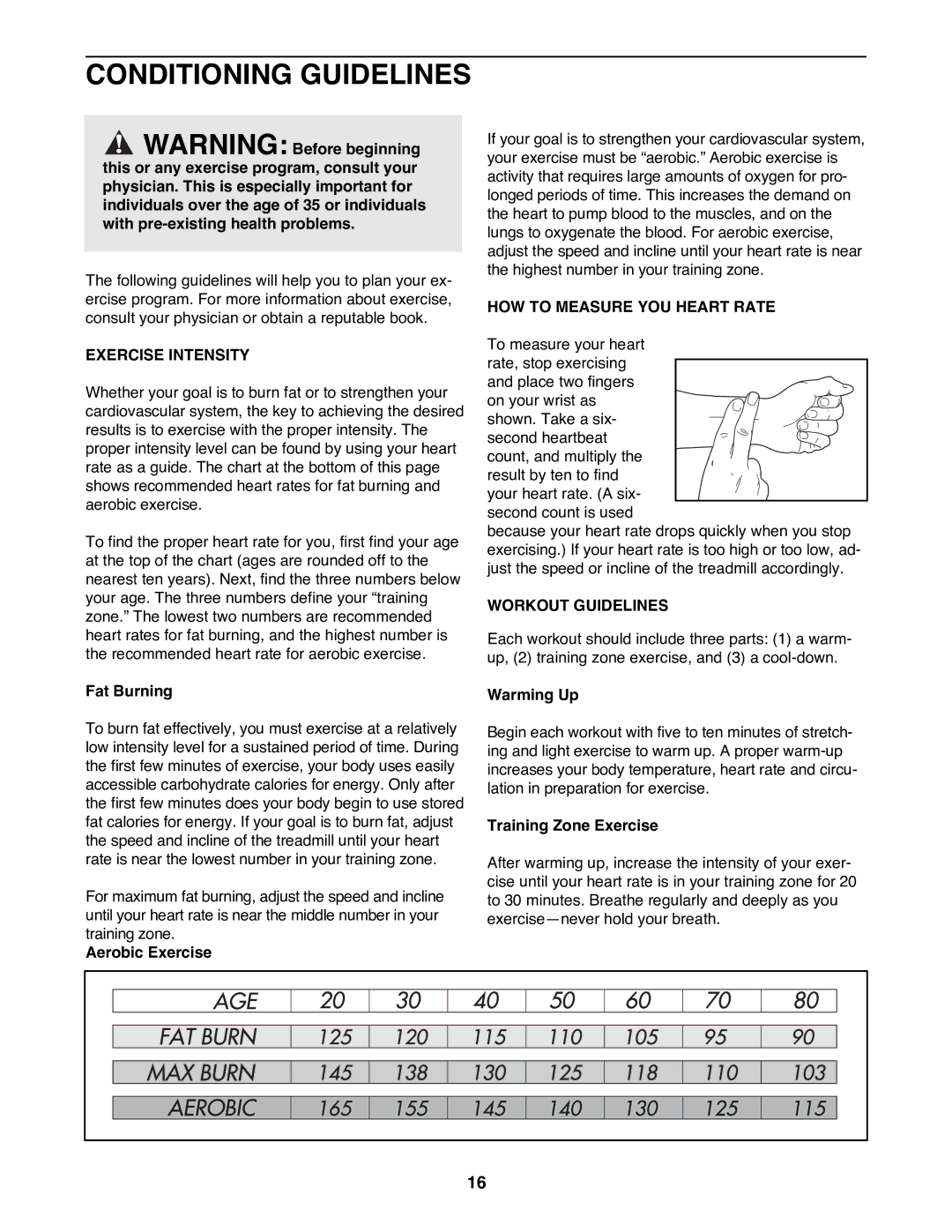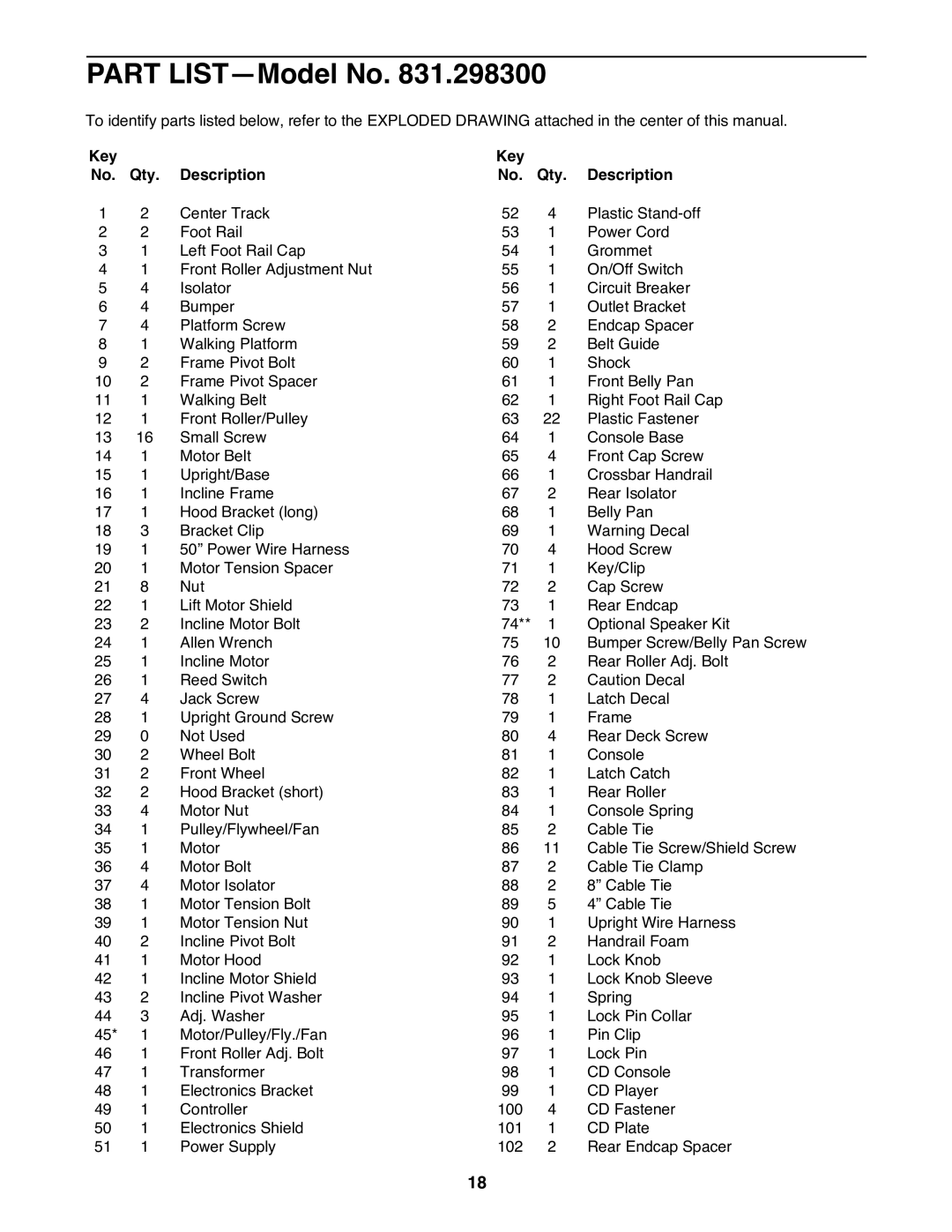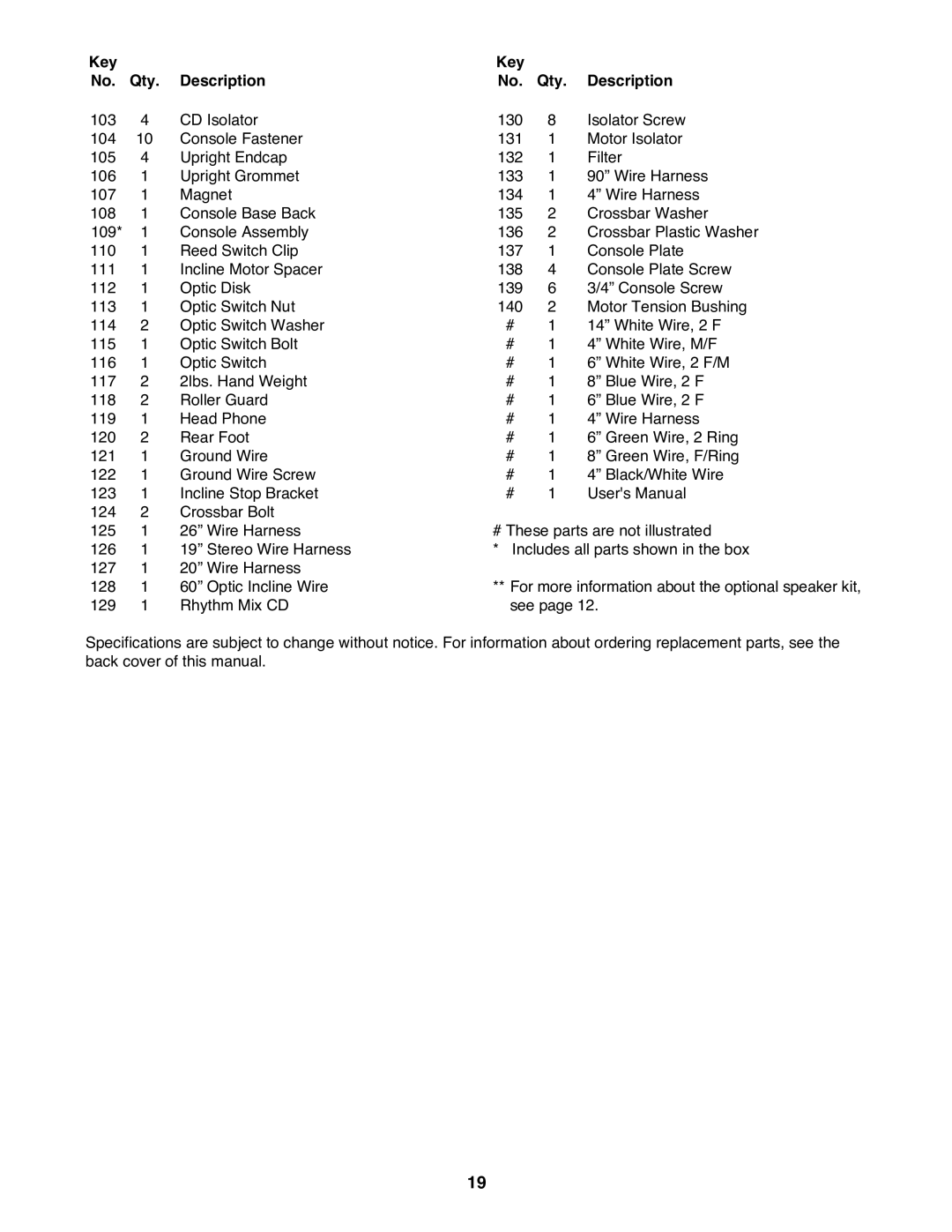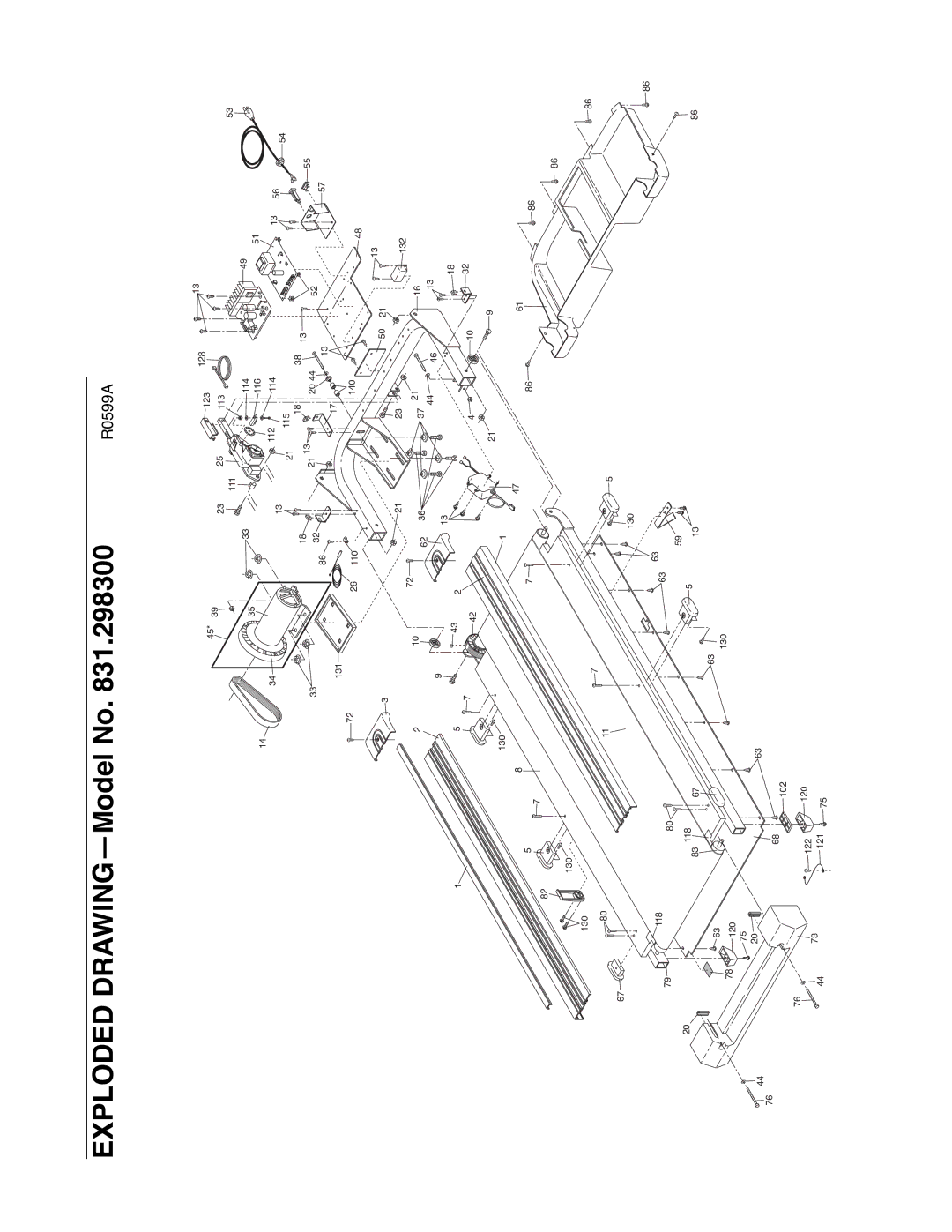
CONDITIONING GUIDELINES
![]() WARNING: Before beginning this or any exercise program, consult your physician. This is especially important for individuals over the age of 35 or individuals with
WARNING: Before beginning this or any exercise program, consult your physician. This is especially important for individuals over the age of 35 or individuals with
The following guidelines will help you to plan your ex- ercise program. For more information about exercise, consult your physician or obtain a reputable book.
EXERCISE INTENSITY
Whether your goal is to burn fat or to strengthen your cardiovascular system, the key to achieving the desired results is to exercise with the proper intensity. The proper intensity level can be found by using your heart rate as a guide. The chart at the bottom of this page shows recommended heart rates for fat burning and aerobic exercise.
To find the proper heart rate for you, first find your age at the top of the chart (ages are rounded off to the nearest ten years). Next, find the three numbers below your age. The three numbers define your Òtraining zone.Ó The lowest two numbers are recommended heart rates for fat burning, and the highest number is the recommended heart rate for aerobic exercise.
Fat Burning
To burn fat effectively, you must exercise at a relatively low intensity level for a sustained period of time. During the first few minutes of exercise, your body uses easily accessible carbohydrate calories for energy. Only after the first few minutes does your body begin to use stored fat calories for energy. If your goal is to burn fat, adjust the speed and incline of the treadmill until your heart rate is near the lowest number in your training zone.
For maximum fat burning, adjust the speed and incline until your heart rate is near the middle number in your training zone.
Aerobic Exercise
If your goal is to strengthen your cardiovascular system, your exercise must be Òaerobic.Ó Aerobic exercise is activity that requires large amounts of oxygen for pro- longed periods of time. This increases the demand on the heart to pump blood to the muscles, and on the lungs to oxygenate the blood. For aerobic exercise, adjust the speed and incline until your heart rate is near the highest number in your training zone.
HOW TO MEASURE YOU HEART RATE
To measure your heart rate, stop exercising and place two fingers
on your wrist as shown. Take a six- second heartbeat
count, and multiply the result by ten to find your heart rate. (A six- second count is used
because your heart rate drops quickly when you stop exercising.) If your heart rate is too high or too low, ad- just the speed or incline of the treadmill accordingly.
WORKOUT GUIDELINES
Each workout should include three parts: (1) a warm- up, (2) training zone exercise, and (3) a
Warming Up
Begin each workout with five to ten minutes of stretch- ing and light exercise to warm up. A proper
Training Zone Exercise
After warming up, increase the intensity of your exer- cise until your heart rate is in your training zone for 20 to 30 minutes. Breathe regularly and deeply as you exerciseÑnever hold your breath.
16
